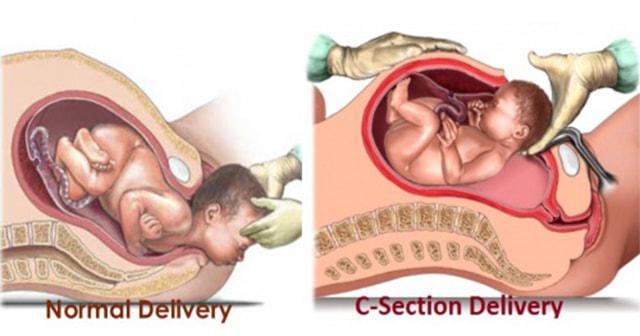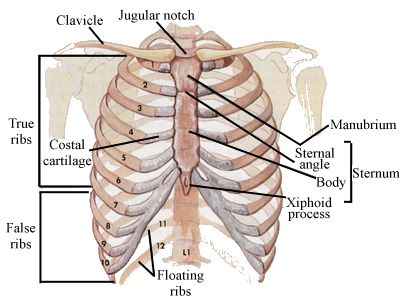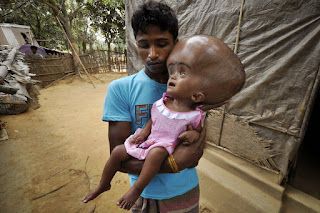CAESAREAN SECTION
Caesarean section, also known as C-section or caesarean delivery, is the use of surgery to deliver one or more babies. A caesarean section is often necessary when a vaginal delivery would put the baby or mother at risk. This may include obstructed labour, twin pregnancy, high blood pressure in the mother, breech birth(bottom first instead of head first comes of the baby), or problems with the placenta or umbilical cord. A caesarean delivery may be performed based upon the shape of mother's pelvis or history of a previous C-section.
PROCEDURE
A C-section typically takes 45 minutes to an hour. It maybe done with a spinal block where the woman is awake or under general anesthesia.
A urinary catheter is used to drain the bladder and the skin of the abdomen is then cleaned with an antiseptic. An incision of about 15 cm (6 inches) is then made through the mother's lower abdomen. The uterus is then opened with a second incision and the baby delivered. The incisions are then stitched closed.
Caesarean section is recommended when vaginal delivery might pose a risk to the mother or baby.
C-sections are also carried out for personal and social reasons. Systematic reviews have found no strong evidence about the impact of caesareans for non-medical reasons.
Medical Uses
Complications of labor and factors increasing the risk associated with vaginal delivery such as:
- abnormal presentation(breech or transverse positions)- Babies are usually born head first. If the baby is in another position the birth may be complicated. In a 'breech presentation', the unborn baby is bottom down instead of head down. Babies born bottom first are more likely to be harmed during a normal (vaginal birth) than those born head first.
- prolonged labor or a failure to progress (dystocia)
- fetal distress
- cord prolapse
- uterine rupture or an elevated risk thereof
- hypertension in the mother or baby after amniotic rupture(the waters breaking)
- Tachycardia in the mother or baby after amniotic ruptures(the waters breaking)
- placenta problems (placenta praevia, placenta accreta or placental abruption)
- failed labor induction
- failed instrumental delivery
- large baby weighing > 4,000 grams(macrosomia)
- umbilical cord abnormalities
- Pre-eclampsia
- previous (high risk)
- HIV infection of a mother with a high viral load
- Sexually transmitted diseases, such as the first outbreak of genital herpes very recently before the onset of labor
- previous classical (longitudinal) caesarean section
- previous uterine rupture
- prior problems with the healing of the perineum
- Bicornuate uterus
- Rare case of posthumous birth after the death of the mother.
Prevention of complications
Postpartum infection is one of the main causes of maternal death and may account for 10% of maternal deaths globally. Caesarean section greatly increases the risk of infection and associated morbidity (estimated to be between 5 and 20 times as high), and routine use of antibiotic prophylaxis to prevent infections is recommended. Infection can occur in around 8 % of women who have caesareans, largely endometritis, urinary tract infections and wound infections. The use of preventative antibiotics in women undergoing caesarean section decreased wound infection, endometritis, and serious infectious complications by about 65%. Side effects and effect on the baby is unclear.







Comments
Post a Comment